Case Study
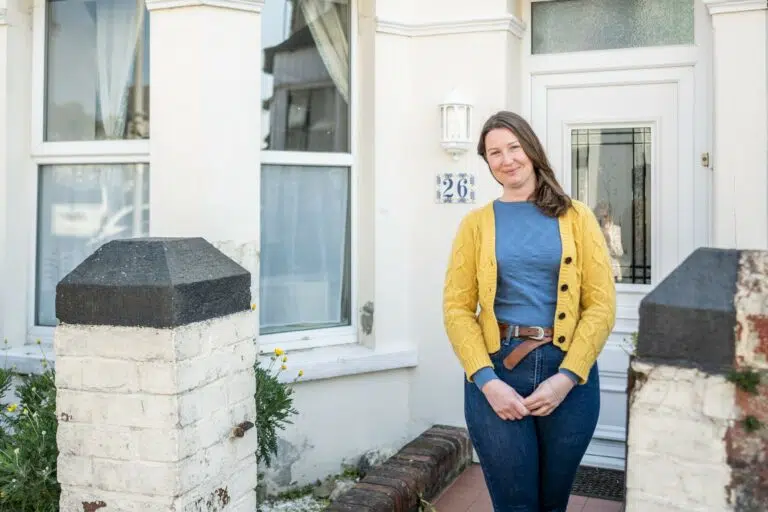
Nicky’s DIY Retrofit Journey
With a background in environmental sustainability, Nicky took on the challenge of improving the energy efficiency and overall condition of her terraced house in Plymouth by learning multiple trades and carrying out much of the work herself.
The Challenge
When she first moved into her new home, in April 2021, Nicky discovered several issues with the building including rising damp, leaning floorboards and crumbling internal walls.
Taking a ‘fabric first’ approach, Nicky prioritised insulating the walls and floors of her house to address damp issues and improve energy efficiency.
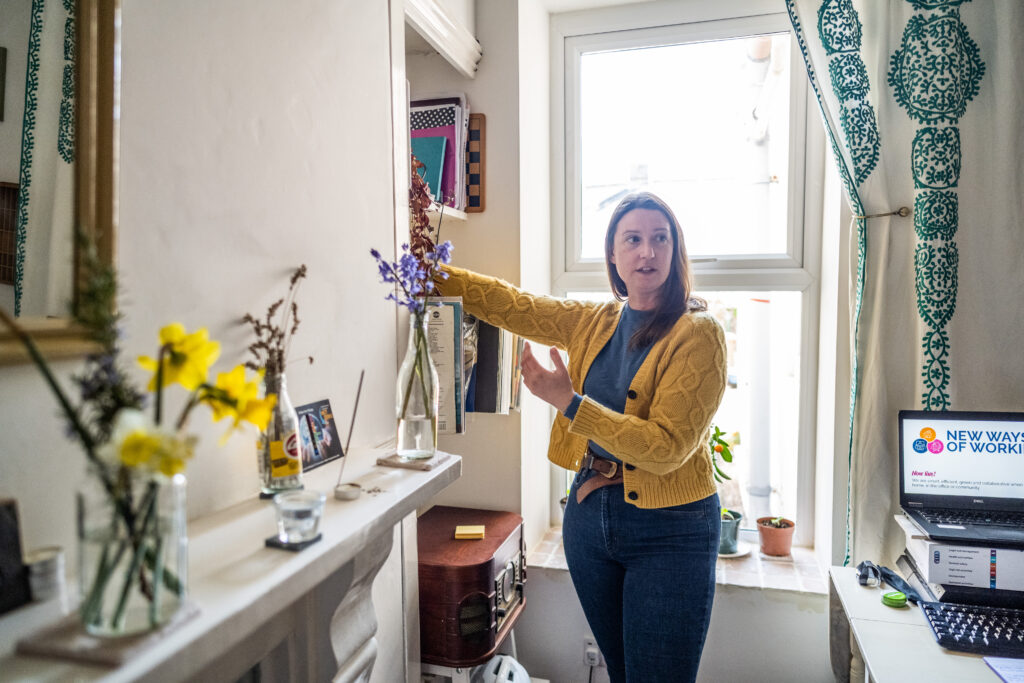
Innovative Solutions
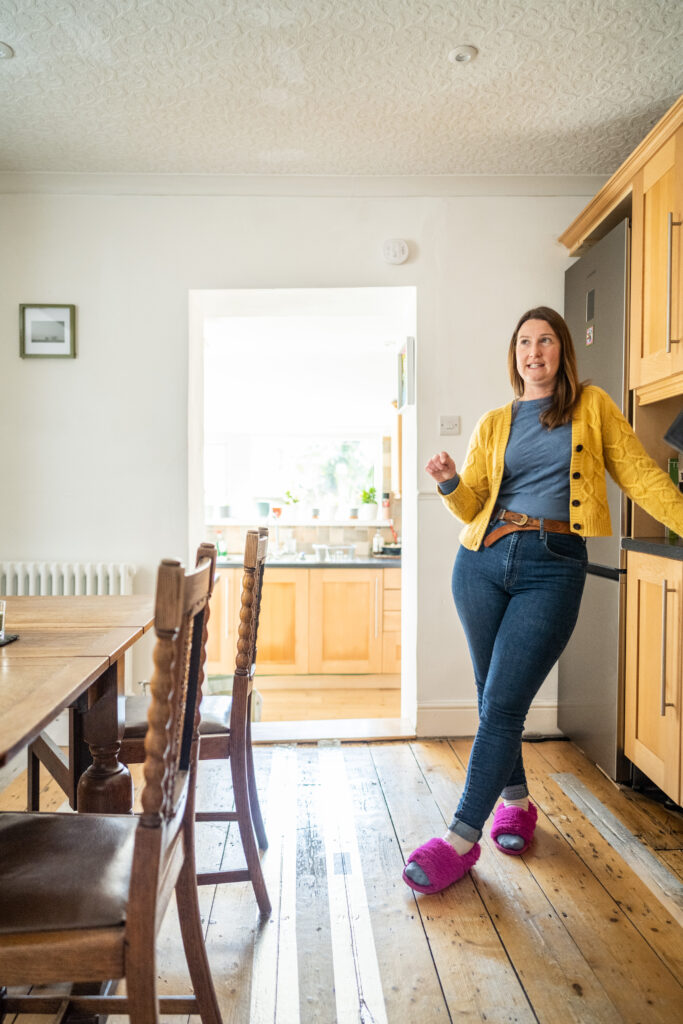
With a very limited budget available Nicky decided to learn the necessary skills and do as much of the work as she could herself. Nicky attended a 5 day Plastering Course at Cornwall College, investing £500 to acquire the knowledge and confidence to do the plastering throughout her house, resulting in significant cost savings by eliminating the need for external contractors.
“For me the £500 investment worked out much better than paying for labour time as I could carry out work myself throughout the house.”
“I quickly realised how cold the house got in the winter so I set to work insulating the walls by building wooden frames, putting insulation in and plastering. For two storeys, I had to completely rip up the floor, put concrete blocks under then joists and rebuild up the floor as all the joists had fallen off their original holdings. I am figuring it out as I go along.”
Given her budget constraints, Nicky utilised available resources and materials creatively. She leveraged her access to waste materials from a local arts college and sourced recycled wood batons from a skip to construct frames for the new internal walls.
She also bought damaged 8ft5 x 4ft sheets of insulation at a discounted price from a local building merchant and constructed new internal walls using recycled old wood. The new, false walls with insulation helped to make her rooms warmer and more comfortable.
“Everything is a work in progress. Most rooms I have replumbed, insulated and had the electrics redone. I’ve insulated under all the floors.”
Nicky repurposed feather board fence posts for the living room walls, plastering over them for a unique finish. She purchased paint from discounted stores and incorporated recycled wool carpets for added warmth. Insulated foam was used to fill any gaps that could contribute to heat loss.
She lifted floorboards, installed permeable plastic across all joists, and placed mineral wool on top of this to prevent draughts from the suspended floor. To save money she turned off fixed ball valves on radiators and focussed on heating the downstairs during colder months.
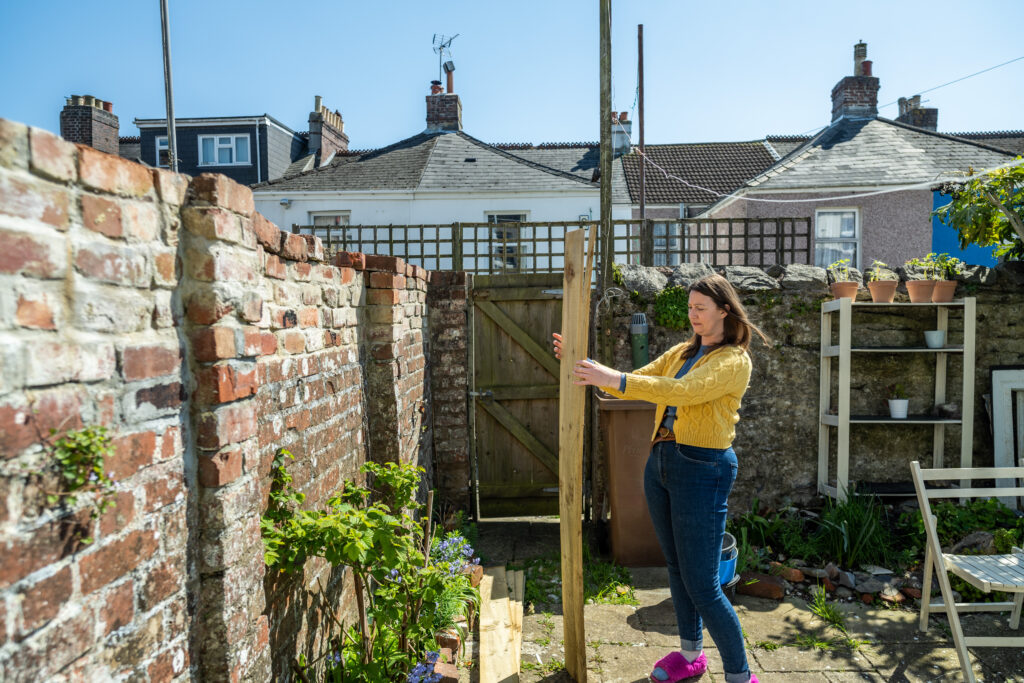
Energy Efficiency Grants and FutureFit
Nicky used the Future Fit web eligibility tool provided by Plymouth Energy Community to help her discover grant funding she was eligible for.
This helped her secure funding for new loft insulation and a new boiler.

Improvements and Materials
As well as improving the fabric of her home, Nicky has replaced old, loose radiators with new, more efficient ones and included thermometers in each room to monitor temperature. Recognising the importance of entrance hall insulation, she has replaced the glass in her front door to ensure a draught proof entryway.
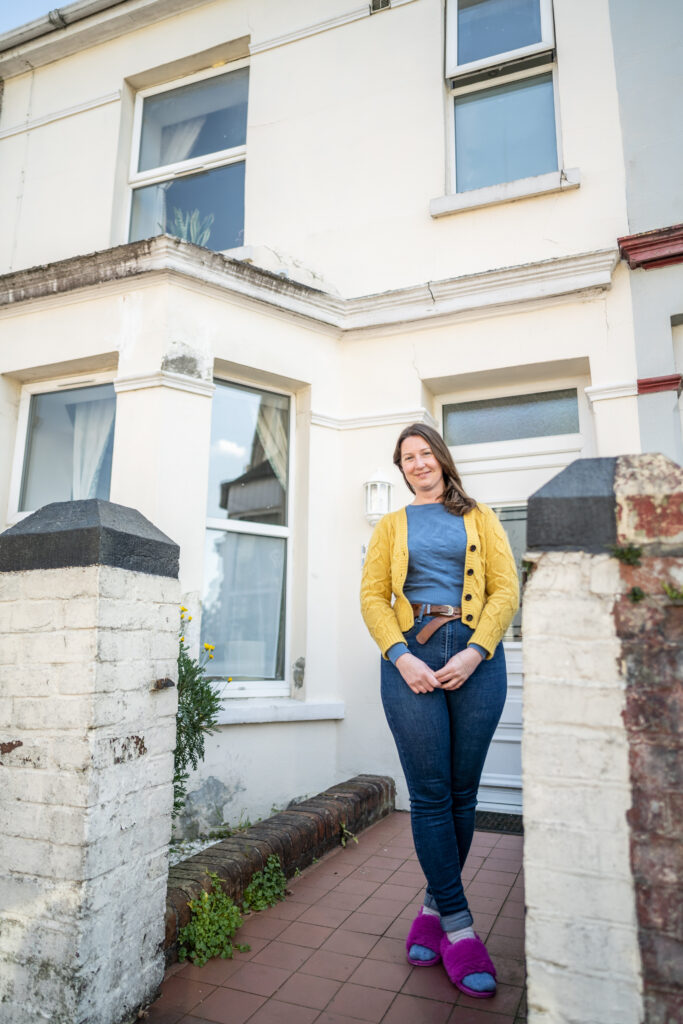
Next on her list is re-rendering the front of the house and replacing the windows, ensuring better insulation, reduced damp and improved temperature regulation. Nicky continues to carefully monitor moisture levels, considering the potential impacts of insulation on relative humidity, dryness, and the condition of wood materials such as the floors in her home.
“I would encourage anyone looking at retrofitting their home to explore vocational courses, seek grants and empower themselves to undertake their own home retrofitting projects. It is such a rewarding process and a cost-effective way to make your home warmer and more comfortable.”
Nicky highlighted the joy and creativity she experienced in transforming her home, comparing it to a massive art project that involved careful planning and continuous learning. “I found that doing up the house was really fun and really creative. I got much more out of it than I thought I would.”












